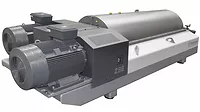Processing Technology
How to optimize drying and evaporation technologies for high-value plant-based proteins
Fine-tuning is critical to achieving a cost-efficient operation
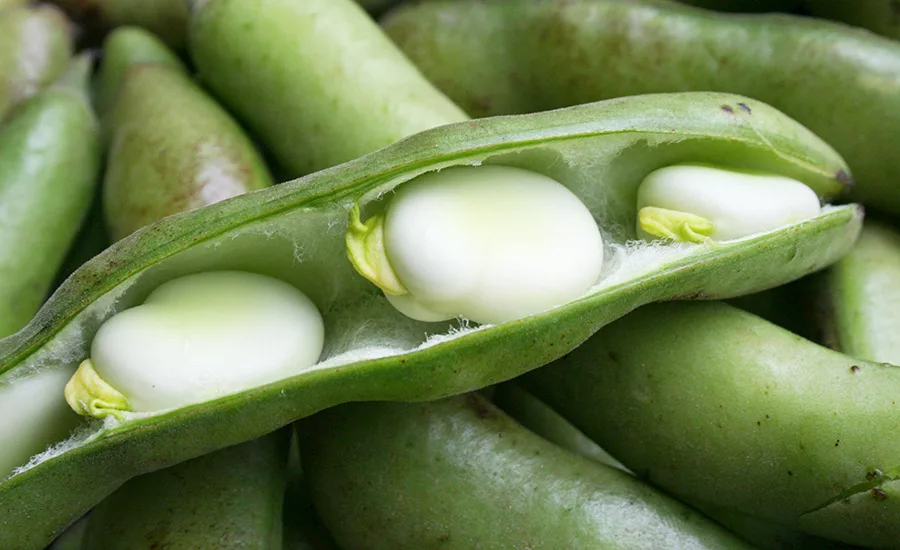
The Plant Based Foods Association (PBFA) reports that 57 percent of all U.S. households purchased plant-based foods in 2020, up from 53 percent in 2019.
Image by johndavi from Pixabay
Dry beans, lentils and peas are a popular and growing choice in Western diets, after having been long established as staples in many Eastern cultures. Factors driving the growth in consumption of pulses include widespread interest in ethnic foods and changes in dietary awareness. As a group, they are one of the most nutritionally-complete foods, inexpensive and widely available. High in protein, fiber and carbohydrates, and low in fat, these soybeans, mung beans, chickpeas, lupin, lentils and peas have become a healthy and popular substitute for dairy and meat, and the trend toward vegan, vegetarian and flexitarian diets is greatly influencing the use of plant-based proteins as dairy and meat substitutes.
In 2020, continued momentum in the plant-based industry led to rapid growth. Hundreds of new products made it to market, and key regulatory wins on food labeling helped ensure a level playing field for plant-based products. The Plant Based Foods Association (PBFA) reports that 57 percent of all U.S. households purchased plant-based foods in 2020, up from 53 percent in 2019.
Start-up plants for protein extraction
The prime market driver for building a facility that manufactures plant-based proteins is to meet the growing demand for non-animal proteins and ingredients, while reducing reliance on animal agriculture. Historically, ingredient manufacturers with expertise in grain fractionation focused on starch as a primary interest for its many food and industrial applications. Proteins and fiber were less important revenue streams, and mostly designated for animal feed. Seizing on changing dietary habits and social interests, these manufacturers as well as new investors are now focusing their attention on valuable proteins from peas and other pulses to bolster profitability.
Most plant startups are looking at processing 35,000 to 70,000 tons of raw crop grind per year. These plants are interested in capitalizing on the high-growth market sector of plant-based meat substitutes, producing high-value protein to be processed into texturized plant protein (TPP)—also called texturized vegetable protein (TVP)—where it is extruded as a meat substitute for retail and foodservice use.
Meat substitutes are manufactured to have a range of 70 to 75% protein, and extruded or formed into finished plant-based meat products. Extrusion processes can be used to define the texture and shape of the products, then molded into forms such as crumbles, strips, patties and sausages. Essentially, the cost per metric ton of this high-value protein, as sold to extruders, establishes the most real benchmark to determine the market value of the commodity.
But protein, being the main focus, accounts for only 20 to 25% of the entire pulse structure. The remaining 75 to 80% of the pulse ends up as co-products—starch, fiber and solubles. The challenges these facilities face is identifying and evaluating the most optimum processes for separating the protein, starch, fiber and solubles, and how to utilize these products for maximum profitability.
Ingredient processing is almost always scale-dependent, relying on high volumes to make up for low margins. Even as demand for new protein flours, isolates and concentrates grows rapidly, the cost and complexity of building processing facilities can make ingredient production capacity slow to materialize. One of the highest priorities for plant-based protein manufacturing is identifying processing methods that offer high output, functionality benefits and efficiency.
Wet fractionation
The preparation of pulses for high-purity separation of proteins, fiber, starches and solubles relies on a wet fractionation process that incorporates drying and evaporation for final processing. These fractionation processes encompass: a) protein purification; b) separation of fiber and starch; and c) solubles recovery.
Protein extraction & purification: The protein extraction process separates the pulse into protein, fiber, starch and solubles. After initial separation, the protein fraction is modified to yield specific properties and end-use characteristics. The most widely used process is an active precipitation method, made by adjusting the pH of the pulses, to promote extraction of the protein fraction.
Then, through functional protein modification enzymes are utilized to yield the protein properties desired by manufacturers, such as a nutritional or functional property, as in emulsification, gelation or solubility. The resulting protein stream can be dried to powder form in a spray dryer to yield an 80 to 95% protein isolate.
Fiber/starch separation: The fiber and starch fraction can be kept as a composite stream and dried in a ring dryer—or further separated into constituent fiber and starch products. As a high-value dietary fiber for human nutrition or other food ingredient, the fiber can be dried in a ring dryer.
The starch fraction can be dried in a flash dryer, and subsequently used in baked goods, convenience food and other food or industrial purposes.
Solubles recovery: The water discharge stream from the protein purification step contains additional nutrients that can be recovered as value-added product. Many recovery processes can be considered, but the simple implementation of an evaporator enables the concentration of a nutrient-rich, liquid product while improving the environmental impact of the wastewater stream. This concentrated product can be used as a liquid fertilizer, or blended with fiber as an animal feed. Additionally, the condensate stream with reduced organics concentration can be recovered as a heat source or further treated for process water recovery to reduce fresh water consumption.
 Block diagram shows steps in a wet fractionation process. Source Dedert Corporation
Block diagram shows steps in a wet fractionation process. Source Dedert Corporation Advances in drying and evaporation improve crop-fractionation
As developments in the plant-based protein market evolve, process manufacturers continue to innovate new solutions to meet specialized needs. Like many suppliers, Dedert Corporation has partnered with ingredients manufacturers to develop custom-engineered process technologies. We look at some examples below.
Spray drying
As a critical process in the manufacture of many powdered ingredients, such as plant-based proteins, spray drying performs a vital product drying function that must balance food safety, product quality, functionality and sustainability.
Passing through an atomizer, water droplets are evaporated upon contact with hot air to release the protein as a powder, which falls to the bottom of the spray dryer. The dry protein powder is pneumatically conveyed to product-collection cyclones, then discharged to a protein powder conveying line for storage in silos or packaging in bags or totes
Spray dryers have mostly been applied with nozzle atomization for plant-based proteins due to manufacturers’ familiarity with dairy protein applications, specifying narrow particle size distribution ranges. Nozzle atomization requires the use of a high-pressure pump which has appreciable feed holding capacity, and therefore, may have substantial maintenance and sanitation considerations. Depending on the application, nozzle atomization may be a requirement, but alternatives such as rotary atomization could offer benefits.
Spray dryers for plant-based proteins are required to meet high food-grade standards according to FDA guidelines, but higher dairy-level standards such as 3-A Sanitary Standards or recommended design guidelines from the European Hygienic Engineering & Design Group (EHEDG) are not yet the norm. Some suppliers already manufacture spray dryers that meet stringent EHEDG hygienic design standards, which can be implemented according to customer requirements. These systems often incorporate new designs, for example, a removable-panel, air-gap insulation with hinged outer-cladding doors for easy inspection access—which can be opened and closed in a fraction of the time compared to bolt-on panels. As the name suggests, there is no fiberglass or mineral wool—instead air is used for insulation between the inner and outer skin of the vessel.
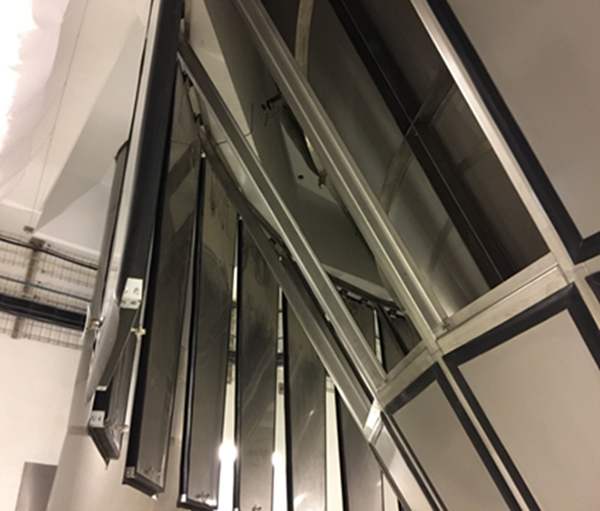 This dryer has removable panels that can be opened and closed easily compared to conventional bolt-on panels. Photo courtesy Dedert Corporation.
This dryer has removable panels that can be opened and closed easily compared to conventional bolt-on panels. Photo courtesy Dedert Corporation.
Flash drying of starches
Flash dryers are used on starch because of their thermal sensitivity. Exposing starch to high temperature can modify the structural and chemical properties, causing denaturation, gelatinization, or other functional changes. Flash drying has a low residence time, low humidity, and low temperature profile, ideal for starch applications.
Flash dryers are pneumatic systems combining simultaneous air conveying and drying, where the starch solids are introduced at the feed point and dry in a single-pass arrangement—before full discharge to a product collection system.
With a short residence time of only a few seconds, the starch solids are in contact with a relatively low heat environment for a short period. As a result, flash dryers produce high-quality final starch products with uniform moisture content throughout and consistent particle size distribution.
The flash dryer, in open-circuit configuration, operates at the lowest temperature for a given application, ensuring uniform drying and gentle treatment of the starch material. Using ambient fresh air, the starch always remains in contact with a clean, unadulterated low-humidity drying medium to prevent risk of contamination or changes to the product’s desired state.
Ring drying of fiber and starches
The ring drying process is an extension to flash drying, and is applicable when fiber and starch require more extended drying times compared to one-pass flash drying.
Ring drying provides a significant improvement in efficiency by incorporating a manifold classifier to centrifugally return semi-dried and oversized material back to the drying system for additional drying. Internal recirculation of semi-dry solids until complete drying permits the ring dryer to operate at lower temperature compared to a flash dryer for an otherwise identical application. Nonetheless, the ring dryer maintains short residence time of only a few seconds, thereby keeping short exposure of solids to operating temperatures.
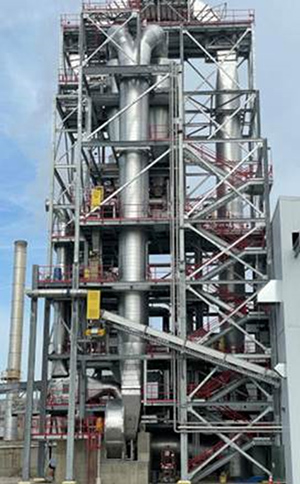 Ring dryers are versatile and accommodate a variety of product grades. Photo courtesy Dedert Corp.
The versatility of the ring dryer design accommodates a variety of product grades and characteristics. The manifold is critical in ensuring efficient temperature operation.
Ring dryers are versatile and accommodate a variety of product grades. Photo courtesy Dedert Corp.
The versatility of the ring dryer design accommodates a variety of product grades and characteristics. The manifold is critical in ensuring efficient temperature operation.
Three configurations of ring dryers are available depending on the application:
Feed-type ring dryers—are arranged so that the manifold directs the solids recycle back to the higher-temperature feed zone for maximum dryer efficiency. The manifold acts as a centrifugal classifier, selectively recycling the heavier semi-dry product through a chute to the disperser for another drying pass. This ring dryer arrangement is suitable for more resilient product types that can sustain limited exposure to high heat.
P-type ring dryers—The manifold directs the solids recycle back into the lower-temperature exhaust zone for temperature-sensitive products. This arrangement offers certain harder-to-dry products the additional residence time to reach sufficient dryness without causing unwanted denaturation, and is traditionally used for drying modified starches.
Full-ring dryers—have a unique manifold design that can provide two functions: a) solids recycle through the hot duct to an air-swept disintegrator, and b) extended residence, if needed, within the manifold to reach sufficient dryness. Challenging drying applications needing extra milling or dynamic blending in the airstream, benefit from this dryer type.
Each of the ring dryer types can have either open-circuit (OC), or partial gas recycle (PGR) configurations to suit the product application or operational requirements. Under OC, ambient air is used as a one-pass drying medium. Under PGR, additional energy efficiency is achieved by recirculating the majority of the dryer exhaust stream back to the air heater as a preheated drying medium.
Evaporation for pre-concentration of solubles
Recovering the nutrients in the liquid remaining from the protein purification step can be accomplished by evaporation. In plant-based protein applications, a falling film evaporator design offers a simple operational concept.
Falling film evaporation—the fluid creates a thin film along the tube walls, progressing downwards (falling) by gravity to the bottom of the evaporator while water simultaneously evaporates to the tubular vapor space.
Mechanical vapor recompression (MVR)—with the addition of a mechanical compressor or fan evaporated process vapor are compressed to a higher pressure to serve as the driving steam for evaporation, minimizing steam consumption.
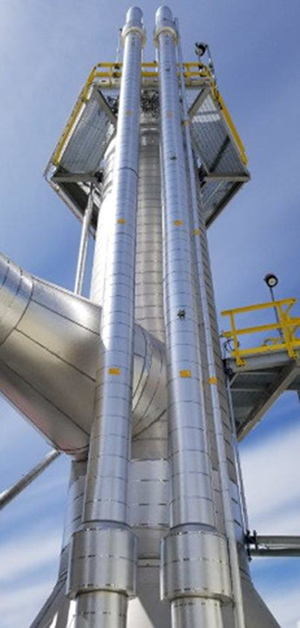 Mechanical vapor compression with an added compressor can minimize steam consumption. Photo courtesy Dedert Corporation.
Mechanical vapor compression with an added compressor can minimize steam consumption. Photo courtesy Dedert Corporation.
Thermal vapor recompression (TVR)—is more energy efficient than a steam heated system when medium-to high-pressure steam is available. The motive steam enters through the steam compressor and draws in evaporated vapor. The vapor mixes in the converging section, and the pressure is boosted to serve as the driving steam for evaporation, minimizing steam consumption.
Energy and water efficiency
Wet fractionation for the extraction of plant protein, starch and fiber rely on solvents and intensive drying. These processes are energy and water intensive.
As drying is the most energy intensive of the processes involved in wet fractionation, a decrease in water that needs to be dried reduces the energy requirements of the whole process considerably. Process innovations for sustainability and improved energy-efficiency are currently under development by suppliers and other like-minded process partners.
From an energy perspective, thermal drying naturally carries a cost related to fuel requirements or other heating sources due to the latent heat of vaporization of water of about 970 BTU/lb. (2256 kJ/kg). Process efficiency can be gained by shifting moisture reduction to other processes. Generally, where possible, mechanical dewatering should be implemented first, followed by concentration, then thermal drying to maximize the integrated process efficiency. This arrangement also opens the opportunity to consider alternate drying technologies with improved cost and energy efficiency for the unit operation. Success of this arrangement is dependent on a holistic approach to process design, requiring a collaborative partnership between process suppliers to ensure a seamlessly integrated process solution.
In addition to energy-efficiency, fresh water consumption is another area of innovative design investigation. Process integrations between the upstream water users and downstream evaporation and drying technologies could result in water recovery for use as process water or other improved sustainability benefits.
For more information, visit Dedert’s website at www.dedert.com.
|
Plant-based protein market The U.S. retail plant-based protein market grew 27.1 percent in 2020, almost twice the rate of the total retail food market, to just over $7 billion, according to PBFA and the Good Food Institute (GFI). Leading the growth was plant-based meat with retail sales growing 45 percent over 2019, to $1.4 billion. The plant-based meat category grew twice as fast as conventional meat, now accounting for 2.7 percent of retail packaged meat sales. Plant-based meat that appeals to meat-eaters is a relatively recent innovation. Although tofu, tempeh and seitan have existed for centuries, we have only recently discovered how to produce plant-based meat that offers a nearly indistinguishable sensory experience as a conventional burger or chicken nugget. According to GFI, “The plant-based meat market has expanded significantly in the past several years, as companies produce plant-based burgers and other products that are virtually indistinguishable from conventional meat. This approach began in 2012 with the launch of Beyond Meat’s chicken strips, and it really took off with the 2016 launch of the Impossible Burger and the Beyond Burger, both of which have succeeded in mainstream fast-food outlets.” The PBFA reports that in 2020 17.6 percent of U.S households purchased plant-based meat. But plant-based milk remains the market leader in this segment, with 39.0 percent of households purchasing plant-based milk in 2020, accounting for $2.4 billion in retail sales and an annual growth sales increase of 20.4 percent. Combined, these two categories represented 55.7 percent ($3.9 billion) of total 2020 retail sales of plant-based foods in the U.S. The remaining $3.1 billion in U.S. 2020 retail sales of plant-based foods came from these categories: frozen meals $520 million; ice cream/frozen novelties $435 million; creamer $394 million; yogurt $343 million; protein powder $292 million; butter $275 million; cheese $270 million; tofu/tempeh $175 million; baked goods $152 million; ready-to-drink beverages $137 million; condiments $81 million; dairy spreads/sauces $81 million; and eggs $27 million. This expanding growth in plant-based retail sales has opened the door for investment opportunities, in fact, 2020 was a record-breaking year for plant-based investments in the U.S. According to GFI, new unique investors in the U.S. plant-based space increased by 44 percent in 2020, compared to 2019. More capital was raised during 2020 than in any single year in the industry’s history since 1980, totaling $2.2 billion invested into the plant-based space. |
Looking for a reprint of this article?
From high-res PDFs to custom plaques, order your copy today!





